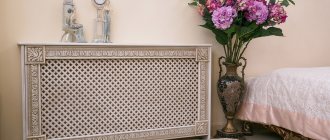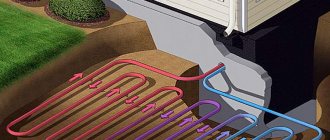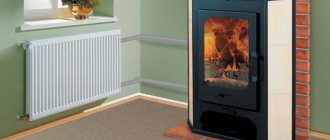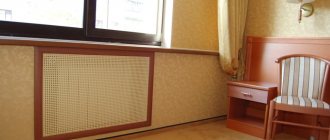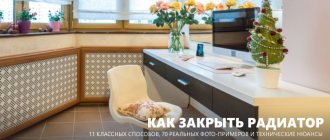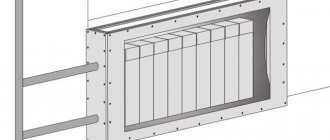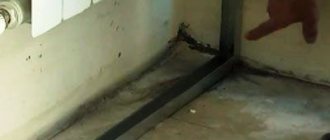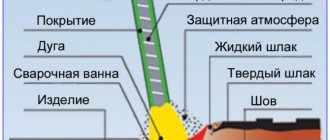In order for the interior of the room to be perceived holistically and to evoke admiration, it is necessary to take care of all the nuances. An old radiator, like modern new radiators, can significantly worsen the appearance of a room. By hiding them from prying eyes, using a radiator grille on the radiator, you will make your home even more comfortable and beautiful.
Hanging grilles are characterized by a wide variety, so everyone can purchase the right option for themselves, depending on the features of the interior and their own taste.
The grille for the heating radiator can be made with your own hands. How to hide elements of the heating system will be discussed further.
Types of screens for radiators
Decorative grilles for heating radiators, made according to all the rules, not only hide unattractive radiators, but also protect them from dust, dirt and damage. Such designs will protect children from burns and prevent individual parts of the body from getting stuck between the bars. After heating, warm air from the radiator rushes upward, and cold air comes in its place. Don't forget this during installation.
The protective panel can be made from:
- Wooden panels;
- Metal;
- Polyvinyl chloride;
- MDF;
- Glass panels, etc.
See photos of 6 types of protective screens below.
The price of a radiator grill depends on the material chosen, so you can always find a suitable option. The location of the battery is also taken into account. If it is located on the wall, install a floor box to provide comprehensive protection.
Fixation Features
Attaching a screen box for a heating radiator to the wall
The main requirement for radiator grilles is the ability to quickly access heating appliances and pipes. This is due to the need to periodically clean the heating elements from dust and dirt. It is recommended to clean twice a year. There are also emergency situations in which the technician must have easy access to the failed area. It is important to think through such a fixation system in advance so that you can easily remove the screen if necessary.
Mounted and attached screens meet this requirement. They can be removed in a few seconds and installed just as quickly. Problems arise with flat and closing radiators, as well as boxes. It is recommended to attach such models to the wall using two slats - one on the box, and the second on the wall. The top edge should be beveled towards the grille. When installing the grille, this part acts as a lock, which can be easily removed if necessary.
There is another installation option. You can put metal elements (for example, plates) on one bar, and magnets on the other. Then there will be no problems with removing and installing the grilles.
Flat screens can also be attached with hooks or loops. They are easy to make, but they can be difficult to install and fit into the loop. Sometimes they also install a decorative version of grilles with sliding doors.
Radiator measurements
When planning the installation of the grille, you should take measurements. You need to add 10 cm to the resulting width of the battery. Add about 5 cm to the distance from the floor to the top of the radiator. The depth of the screen should be 3 cm greater than the distance from the front of the radiator to the wall.
The radiator grille screen must cover the radiator. The grille itself is attached to the floor and wall, and the radiator is covered with a window sill on top.
Cost of decorative screens
An important role when choosing a screen for a battery is played by its cost - sometimes it is decisive. Prices for these products range from 230 rubles. up to 8000 rub. and higher depending on the material of manufacture.
Table 4. Average cost for some types of decorative screens
| Illustration | Material | Dimensions, mm | Average cost as of March 2022, rubles |
| Steel | 610 x 690 x 142 | 740 | |
| MDF | 600 x 600 600 x 900 600 x 1200 600 x 1500 | from 960 | |
| HDF | 610 x 1210 x 3 | 1000 | |
| HDF | 600 x 900 x 200 | 2000 | |
| HDF | 610 x 910 x 3 | 890 | |
| HDF | 600 x 900 x 5 | 695 |
Wooden grilles for heating radiators
Wooden grilles fit perfectly into a classic interior. They look luxurious and rich.
It is difficult to make such gratings yourself, so it is better to order them from a professional. Without any special skills, you can create simple screens; for this you will need:
- Thin slats made of wood;
- Several blocks for the frame;
- Jigsaw;
- Set of nails;
- Varnish coating.
Before installation, the slats are sanded and their width is adjusted to the same size. You should not make a cell larger than 5*5 cm. When the lattice is woven, cut off the protruding parts of the slats. The grille can be made both on the front and on the side walls of the radiator. The bars are polished and a frame is made from them. After fixing the frame, the grille is attached to it. The resulting screen is varnished.
How to make a protective mesh for a grill with your own hands
Ready-made protective nets can be made from materials such as:
- aluminum;
- steel;
- carbon;
- plastic.
Aluminum is a lightweight but durable metal that does an excellent job of protecting the cooling system. Steel meshes are no less effective. Carbon meshes are commonly used to protect the radiators of sports and racing cars, but they are expensive.
The most popular material for making your own mesh is ordinary plastic. It is easy to work with, and its cost allows for some mistakes.
Materials and tools for tuning
To work, you will first need the mesh itself, which can be purchased at almost any hardware store. Chain-link mesh is perfect for these purposes, although other options are also acceptable. The material, be it plastic, aluminum, steel or even carbon, is at your discretion.
Chainlink mesh is well suited as a base
So, to work on the mesh you will need:
- the mesh itself;
- paper;
- ordinary scissors and metal tools;
- metal cutters;
- pencil and marker.
DIY creation
All your further actions depend on the shape of the radiator grille. If it is fairly even, with relatively right angles and clear lines, you just need to measure the length and width of the lattice, and then cut the mesh in accordance with these parameters. However, manufacturing becomes significantly more complicated if the part has a complex shape with a large number of bends or sharp corners.
In order to make a pattern, you will need to do the following:
- Attach a sheet of paper (or glued sheets) to the radiator grille. Press firmly so that you can clearly see its shape, and then trace along the outline.
- Cut out the resulting shape from paper.
- Attach the pattern to the mesh and cut it out. If you are going to install the mesh on the outside of the grate, be sure to leave allowances of about 0.5 cm on all sides.
- Use pliers to remove all excess.
The process of making a protective mesh in the photo
Cut out a pattern from paper that matches the shape and size of the radiator grill Cut the mesh according to the pattern Cut off all excess and your mesh is ready
If the mesh is too fine-mesh and soft, you can use a second mesh with larger cells as a frame. Cut out the desired shape using the same principle, and then connect both parts.
Your mesh is ready. Now all that remains is to paint it and install it on the grill.
Metal grilles for heating radiators
The battery grill can also be made of metal. This is quite a painstaking job that requires the following materials:
- Expanded mesh;
- Aluminum corner;
- Bulgarians;
- Shurupov;
- Screwdrivers.
The corners are marked and cut. The components of the frame are fastened with screws. The mesh is used to create a shield that is attached to the frame. Finally, fasteners are installed to help secure the grille to the wall.
Purposes and materials of gratings
In addition to their decorative function, grilles perform a protective function. They allow you to hide and round off sharp and hard edges. This is especially true if there are small children in the house who may be injured. Radiator screens also prevent you from getting burned on hot pipes.
Screens are made from the following materials:
- Metal. One of the most popular screen materials for radiators. They are made of thin steel, which is then painted. The duration of operation depends on the quality of painting. They are considered the most optimal, since they practically do not cause heat loss. The metal heats up quickly and radiates heat itself, so the room will not be cold. The advantages include a long operating time, which reaches several decades, as well as low cost. The disadvantage is that the appearance is not the most aesthetic. There are forged models, but they need a background.
- Wood. Wood is a top-class material. It is environmentally friendly, looks stylish and allows you to create grilles of different shapes. Even inexpensive wood models look beautiful. But battery efficiency behind a wooden screen is significantly reduced. It takes a lot of time to heat up wood.
You can find radiator grilles made of exotic materials - these include bamboo and rattan. They serve only a decorative role and do not fit into every interior, so they are rarely used. There are also combined models on sale. A classic example is a wooden frame on which a decorative mesh made of another material (bamboo, MDF and HDF panels) is stretched.
Advantages and disadvantages of different materials
Wooden models have the following positive qualities:
- Durability. When used correctly, wood practically does not lose its properties.
- Reliability.
- Environmentally friendly. Wood is a natural material that does not emit harmful substances.
- High degree of heat transfer.
- Bulk wooden gratings do not withstand temperature fluctuations well. Some models may become cracked after just a few seasons.
- Duration of wood heating.
Glass screens are used infrequently. But they have the following advantages:
- The price is lower than that of wood.
- Ease of installation. Any technician can install a radiator grille.
- Stylish appearance. You can apply drawings and photographs to the screen using thermal printing to suit any interior.
- Safety, ease of care, high degree of heat resistance.
The disadvantages of glass models include fragility. Cheap products may be made of thin glass, which makes them prone to accidental breakage. High-quality, expensive screens are made of durable material that is almost impossible to damage.
The advantages of plastic models are as follows:
- Attractive price. You can find a radiator screen for any budget.
- A wide range of. There are shapes and colors to suit any interior.
- Easy to care for. Plastic products can be washed an unlimited number of times.
- They quickly lose their attractive appearance.
- When heated, harmful substances may be released. They can negatively affect people's health. Such models are prohibited from being installed in medical institutions, kindergartens and schools.
Advantages of metal models:
- Practicality. The screens are unpretentious and can be installed in any conditions.
- Resistance to temperature fluctuations.
- Strength. Metal is practically resistant to mechanical stress and vibration.
- Metal gratings are not affected by changes in pressure and humidity.
- Easy to install. They are also easy to dismantle.
- Low cost. Associated with the simplicity of manufacturing technology.
- Duration of operation. Associated with the unpretentiousness of the material and lack of response to external influences.
- Wide selection of models. They are presented in all price ranges.
The disadvantages of metal include the difficulty of making it yourself. In this case, it is better to buy a ready-made model or order it according to individual sizes and characteristics.
The rest of the materials are practically not used.
Plastic grilles for heating radiators
PVC is considered an inexpensive material, which is also often used to create gratings. Its main disadvantage is considered to be instability to mechanical damage. When using PVC, measurements are taken especially clearly; a box located close to the battery will very quickly deform and lose its decorative properties.
During the manufacture of plastic gratings you will need:
- PVC;
- Cutter;
- Drill;
- Set of screws;
- Corners for fastening.
Adhering to the rules stated above, take measurements and cut out the necessary parts from plastic. Using a drill, make holes in the plastic panel. The more holes you make, the better the air will circulate. Connect all structural elements with corners and screws, attach the grille to the wall.
The principle of heating a room
Decor is the main function of battery grilles. But radiators are used to heat the home, so there should be no obstacles in the way. Even the thinnest screens reduce heat transfer, so you should choose products with a low percentage of absorbed heat in advance.
Air should enter the radiator from below, pass along it, heat up and go to the top. This system will heat the room. Therefore, when choosing a grill for the battery, you need to make sure that there is a small gap at the bottom and that there is no cover at the top. It is possible that the top cover has a large perforation area.
Many modern decorative radiator grilles reduce heat transfer by more than 20%. Screens in the form of boxes made of solid wood lose a particularly large percentage of heat. Models with a minimum number of holes and a small perforation area will be ineffective in operation.
The screen additionally protects the radiator from dirt. Dust particles settle on a hot battery and decompose under the influence of high temperature. As a result, the surrounding atmosphere becomes polluted with decomposition products, which harms the health of people, especially allergy sufferers and asthmatics. When installing the grille, the accumulation of dust on the radiators is significantly reduced. Periodically you need to clean the screen with a cloth or vacuum cleaner.
Grills for heating radiators made of plasterboard
Drywall is one of the easiest to work with. A sheet of drywall is marked and elements of the required sizes are cut out. Rectangular holes should be made on the grating surfaces.
Using corners and screws, connect all parts of the structure. Next, the structure is mounted above the radiator. Irregularities and corners are puttied and sanded. The grille is painted in a pre-selected color.
Step-by-step instructions for making a screen for a radiator
Before carrying out the project, first of all, the appearance of the desired model is determined. In the case where the radiator is located in a niche, choose a decorative grille according to its size. Most often, heating devices are installed under windows, so it is recommended to use hinged structures.
Selecting material for the screen structure
In order to make a high-quality screen for the heating radiator with your own hands, select building materials or their combinations:
- The metal shield performs excellent heat transfer. It can be given a rather luxurious look using perforation or applying patterns using electric welding.
- Wood protective screens not only look solid, but are also environmentally friendly. Wood is also a malleable type of material, quite easy to finish. It must be taken into account that such structures, under the influence of overheated ambient air and humidity, are prone to deformation and shrinkage. In order to avoid these negative aspects, it is necessary to choose high-quality, dried wood, and treat the finished decorative screen with special impregnations.
- Plastic is preferred by many users due to its affordability and wide variety of colors, as well as ease of processing. However, it is short-lived; it warps due to high ambient temperatures and is capable of releasing ingredients that are dangerous to the human body. For this reason, PVC screens are not recommended to be placed in rooms with constant occupancy, for example, in bedrooms.
- Strengthened glass protection has good characteristics. This glass with processed thickened edges is quite safe. It is possible to decorate it with almost any picture, supplemented with LED lighting. Such screens belong to the category of elite modifications, so their production is expensive.
- MDF screens are a predominantly common method of protecting heating radiators. Slabs made from the finely dispersed fraction are practically no different in quality from wood; they are easy to care for and easy to install. They are characterized by an abundance of colors, a variety of textures and styles.
Markup execution scheme
Work on the screen arrangement is carried out in the following order:
- The geometric characteristics of heating radiators are taken. At least 90 mm is added to the resulting width, and 50 mm to the height.
- Mark the resulting dimensions on the prepared sheet and cut out the components and parts along the marked lines, thus creating the outer side of the product.
- To deepen the top of the box, add 400 mm to provide free space on the radiator. It is cut out in a similar way.
- The calculated number of holes is made in the front panel, having previously drawn them on the sheet.
- Ornaments can be chosen in any shape, they will depend on the idea and professionalism of the master.
How to assemble the screen
All prepared units are connected using an angle metal profile. By placing it in the middle of the structure and using screws to connect it. When unlined building materials are used, the side planes of the box can be covered with wallpaper to match the color of the outer panel. It is advisable to cover ordinary wooden elements with stain. Craftsmen do not recommend using paint and varnish products. For stability, stands are attached to the bottom of the screen.
The protective screen of heating devices is attached to the wall in different ways. It could be a strong frame. Many craftsmen choose the fastening method - anchor collets. This method is the most labor-intensive and expensive, since it is necessary to purchase expensive auxiliary parts.
There is a method for mounting shields on legs. They are attached to the bottom of the product using specialized corners. If you use adjustable legs, the height of the structure will be easy to change in the future.
MDF heating radiator grilles
In stores you can find a wide variety of shaped MDF grilles. It is possible to choose the appropriate pattern and hole size. The MDF panel is inserted into a wooden frame. If the radiator is located in a niche, an MDF grille will also be a good solution. You can make loops on one of its sides, and fasteners on the opposite side. This will make it easier to access the radiator.
You can buy an MDF screen in the form of a box. Such products are fixed to the wall and floor.
Installation of a decorative MDF grille on video:
Features and sizes of decorative grilles
First, let's look at the functional and type features of screens for radiators, and only then we'll move on to considering the instructions for their manufacture. So, decorative grilles are responsible for several tasks at once:
- Radiator camouflage. If you need to effectively hide the radiators, but at the same time not provoke a decrease in the quality of heating, then decorative screens are an ideal option: they will decorate the radiators in an original way, but will not interfere with the full movement of heated air masses from the heat source to remote areas of the room.
- Protection from dirt. The grille is not just beautiful, but also convenient: it protects the radiators from dust and dirt, so servicing heating appliances does not cause trouble for household members.
- Battery safety guarantee. The screen can rightfully be considered not only decorative, but also protective, because it protects household members, especially children, from blows and burns from contact with radiators.
Moving on to the specific features, we immediately note that in this regard, the gratings have no restrictions: they can have completely different shapes, colors, textures, and dimensions. True, a generally accepted size range still exists:
- 60x30 cm;
- 60x60 cm;
- 60x90 cm;
- 60x120 cm;
- 60x150 cm;
- 60x180 cm.
As for the materials from which decorative grilles are traditionally made, we can confidently highlight the three most popular options.
Glass radiator apron
Glass screens are becoming increasingly popular as they look stylish and unusual. The idea that glass is fragile can be refuted. For such screens, tempered glass up to 8 mm thick is used, which is particularly durable.
It is especially important to use such glass grilles in bathrooms; they are highly resistant to moisture. When ordering glass, you must specify the dimensions of the parts in advance and provide for the presence of holes for fastening.
Small gaps are left at the top and bottom for air circulation. Glass can be decorated by making the surface matte or by applying a design to it. There are also special requirements for fittings for fastening: it must be chrome plated and have a remote fastening. Attach glass grilles directly to the wall.
Choose the appropriate radiator grille option for your radiator and enjoy the beauty of your home!
Don't be greedy, share with your friends;)
How to reduce heat loss
To ensure a reduction in heat loss, you need to understand how a radiator battery functions.
Heat transfer from the radiator to the room occurs in two ways:
- Using heated air flows (convection).
- Through direct infrared thermal radiation.
These paths vary in efficiency and priority depending on factors such as room temperature, radiator design, and interference. For example, if it is not very cold outside, cast iron batteries operate on the principle of convection. With a significant decrease in temperature, they heat up to +70 ° C and begin to work due to thermal radiation in the infrared spectrum.
Using the same principle, modern aluminum batteries heat the room, but they adapt more flexibly to external factors. For example, if heat enters a room with difficulty, for example, when closing the radiator with thick curtains, then the heat flows inside it move closer to the outer front surface and the device begins to operate in heat radiation mode.
To ensure optimal battery performance, both heat exchange possibilities must be provided. This can be achieved by installing decorative screens on convector radiators without an upper horizontal panel and with sufficiently large holes on the front panel (they must be at least 50% of the total screen area). This will ensure free circulation of heated air.
Also, for normal air convection, it is necessary that the upper part of the decorative screen protrudes beyond the edge of the window sill by at least 2/3 of its depth.
In addition, to ensure proper functioning of the battery, the outer cladding material must have good thermal conductivity, and the inside of the screen must be painted a dark color (dark brown or black). These two factors will allow infrared rays not to remain in a confined space, but to be effectively transmitted into the room.
A significant part of the heat is spent heating the wall near which the battery is located. To reduce heat loss and direct heat in the right direction, it is necessary to hang a reflective screen on the wall behind the radiator. For its manufacture, foam roll insulation with a foil surface is usually used. The shiny side of this auxiliary element should be directed towards the room. The mirror surface will effectively redirect the heat emanating from the radiator into the room.
Sometimes, instead of foam insulation, foam with a reflective surface is attached to the wall, and then a radiator is mounted. This also helps reduce heat loss and save significant money on energy consumption.
The most unsuccessful option for a decorative screen is considered to be a solid panel with very small holes at the top, bottom or along the entire plane. It will not be able to provide the required circulation of heated air, so you will have to install additional heating sources in the room, and this is not economically profitable.
A wide wooden frame that completely covers the radiator and has slots on the front panel that are far apart from each other is also not the best option. The upper part of such a screen can be used as a flower stand, but it provides heat transfer only due to direct infrared radiation from the front side. In this case, the flow of cold air coming from the window is not blocked and a thermal curtain is not formed.
The grille, which minimizes heat loss, should be equipped with holes or directed slots on top. This design directs the warm flow upward, while simultaneously blocking the path of cold air from the window.
Decorative screens with aerodynamic canopies made of metal or thick cardboard are also considered successful. This element is convenient if the battery is located under the windowsill. The visor redirects the heated air towards the room, preventing it from accumulating on top of the radiator.
Another effective addition to the design of the decorative panel on the battery is a heat injector. It consists of two directed blades that collect the warm masses accumulated between the front wall of the grille and the battery itself, and direct it towards the room with a powerful flow. This option is most effective when the radiator is operating in “winter” mode.
The most effective heat-saving screen is considered to be a design that has all of the above details:
- dark coloring of the inside according to the link.
- thermal insulation layer with foil coating;
- aerodynamic visor;
- thermal injector;
- lattice front and top panels with large cells. Study floor-mounted water heating convectors at the link.
Making your own grating
Scheme for making a screen for a radiator with your own hands
Stores offer a huge range of screens made from different materials, with different shapes, designs and colors. But if you wish, you can make a decorative lattice yourself with your own hands. The work is not difficult; all the necessary materials can be purchased at any hardware store. No professional equipment required.
To create a screen for the battery, you will need the following tool:
- Grill material. MDF or chipboard is usually used, as they are the easiest to work with.
- Hacksaw.
- Construction adhesive.
- Sheet steel mesh for front and sides.
- Metal sheet for reflector.
- Nails, screws, fasteners.
- Tape measure, pencil.
The first stage is measurement. It is necessary to measure the height and width of the radiator. For each value obtained, add 1
You can make a screen grille or a complete frame from metal
0 cm. You can add a little less to the height - 5 cm. Next, the depth of the battery is measured, and 2.5 cm is added to its value. The size of the future cover is measured in the same way. Its final dimensions should exceed the dimensions of the sidewalls by 2-3 cm.
Cutting parts. The front part is created from sheets of MDF or chipboard. Rectangular parts approximately 11 cm wide are cut out of them. Angles of 45° should be made in the touching areas for ease of connection.
A metal reflector is installed on the back. The dimensions should be approximately the same as the decorative cover. It allows you to reduce heat loss and direct infrared waves to the center of the room.
Next, a sheet steel mesh is installed. It acts as a frame onto which all previously cut elements are then assembled.
After the grille is assembled, you can install it on the battery.
Purpose
Decorative screens for the heating system help give your room a more complete look. When carrying out renovations, few people think about how the heating system will fit into the new renovation. Only after the renovation is completed does it become clear that something needs to be done with the heating system.
If you have a new apartment, then the batteries can look quite respectable and fit into the existing design.
But what to do if the house is old and the heating system is old. In this case, you will undoubtedly be helped by screens that can hide your cast-iron radiator, and the heating system will be in harmony with your renovation.
